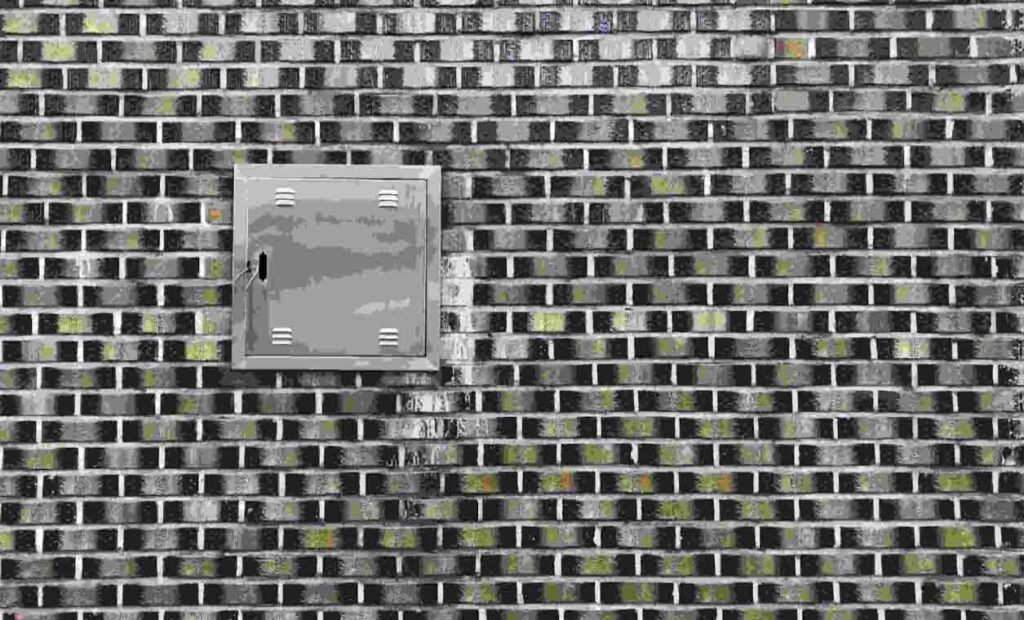
Bathroom wall tiles are more than just a necessity. They also make the area unique by combining style and function. The bathroom is one of the most used rooms in the house. Wall tiles not only keep your walls from getting damaged by water, but they also give you a lot of ways to show off your style.
In 2025, people are rethinking their bathrooms as places of comfort and new design ideas. Bathroom wall tiles are a big part of making a room feel both comfortable and useful. Picking the right tiles is important for a polished, long-lasting bathroom, whether you’re remodeling an old one or building a new one. In this article, we’ll talk about everything you need to know about bathroom wall tiles.
Table of Contents
Why Bathroom Wall Tiles Matter in 2025
Bathroom wall tiles in the year 2025 are more than just a practical need. The bathroom has changed from a simple room for functions to a place of comfort, style, and personal expression. It is one of the most used rooms in a house. Bathroom wall tiles are an important part of this change because they are both useful and nice to look at.
In terms of function, bathroom wall tiles are very important because they protect against mold, water damage, and wetness. They make a surface that is long-lasting, easy to clean, and can handle the damp conditions that are common in baths. Tiles are useful, but they are also a great way to create. In 2025, homeowners are putting more and more value on customization, sustainability, and incorporating technology into their renovations.
The Role of Bathroom Wall Tile in Modern Design
Bathroom wall tiles aren’t just an afterthought when it comes to home design; they’re now an important part of how the area looks and how it works. These tiles are useful in more than one way, combining functionality with imagination to make the bathroom experience better.
Bathroom wall tiles can completely change the look of a room. They set the mood for your bathroom, whether you want it to be calm and spa-like or lively and fun. Because tiles are so flexible, they can be used in a huge range of ways. They come in basic colors, bright patterns and textures, and everything in between. Tiles that are light in color can make small bathrooms look bigger, and tiles that are rough or patterned can give them more depth and interest. Large-format tiles get rid of grout lines, giving the floor a smooth, modern look that works well with modern designs.
In 2025, bathroom wall tiles will be used in a number of different ways. More and more people care about the environment, so they choose tiles made from recycled materials or made in ways that use less energy. More and more people are using big patterns, like geometric shapes and mosaics, to make focus points that stand out.
How to Choose the Right Bathroom Wall Tiles

When picking bathroom wall tiles you need to think about how they look, how well they work and your budget. You should choose something that fits your personal style and works well in a high-moisture setting. Here’s a smart way to go about the process.
First, think about the look of your bathroom as a whole. Do you want to look current and simple? It might be best to use large ceramic tiles in neutral colors with matte finishes. Natural stone tiles, like travertine or slate, add warmth and depth if you like a more rustic look. If you like a lot of different styles, you can make your own place by mixing and matching patterns, colors, or shapes.
Next, think about the different material choices you have. Ceramic tiles are cheap, can be used in many ways, and come in a huge variety of patterns. This makes them a great choice for projects that need to stay within a budget. Porcelain tiles are dense and very long-lasting, which makes them great for wet places. Glass tiles are great for accent walls or backsplashes because they reflect light and look classy. For people who care about the environment, eco-friendly ceramics or recycled glass are sustainable options that fit with current styles.
The tiles’ size and form are also very important to the design as a whole. Small mosaic tiles are great for adding small features or covering curved surfaces. Large tiles, on the other hand, hide grout lines and give the room a clean, modern look. Using different forms in your bathroom, like hexagons, chevron patterns, or rectangular subway tiles, can make it look more interesting and give it more texture.
Both color and finish are important things to think about. A calm environment can be created with neutral colors like white, gray, beige, and soft pastels. Bold colors like deep blues, greens, or blacks can be used to make accent walls that stand out. Glossy finishes make the room feel better and bigger, while matte finishes hide fingerprints and cut down on glare.
Last, think about your funds. Prices for bathroom wall tiles vary a lot depending on the brand and type of tile. Most ceramic tiles cost between $2 and $5 per square foot. On the other hand, real stones can cost $10 to $30 or more per square foot. It might be tempting to pick the cheapest choice, but buying good tiles will save you money in the long run because you won’t have to replace or fix them as often.
By giving these things some thought, you can choose bathroom wall tiles that not only meet your needs but also make your bathroom a stylish and useful place to relax.
Step-by-Step Guide to Installing Bathroom Wall Tiles
| Step | |
| Preparation | To figure out how many tiles you need, measure your walls and add 10–15% more for cuts and mistakes. Gather things like tile glue, grout, spacers, a trowel with a raised edge, a level, a tile cutter or wet saw, and safety gear. A smooth process is guaranteed by good planning. |
| Surface preparation | To get rid of dirt, grease, and loose paint, clean the walls very well. Make sure the surface is dry and clean. If you need to, put down a waterproofing layer, especially in bathrooms, and wait for it to dry completely before moving on. |
| Installation process | Start at the wall’s base and work your way up. Mark where things should be lined up with a level. Using a notched trowel, spread glue evenly on a small part of the wall. Then, firmly press tiles into place. Put in spacers to make the grout lines even, and keep checking the placement often. Use a wet saw or tile cutter to cut tiles to fit around corners, edges, or fittings. |
| Grouting and finishing | After the glue has dried (normally 24 hours), mix the grout and use a rubber float to press it into the spaces between the tiles. Remove any extra grout with a wet sponge, being careful not to take off too much. After the grout has set, use a soft cloth to clean the tiles and get rid of any haze. Sealing the grout will keep it from getting stained and wet, which is especially important in hot bathrooms. |
| Post-installation care | Before putting water on the tiles, let them dry for at least 24 to 48 hours. Use gentle cleaners to keep the tiles clean, and stay away from rough tools that could damage the surface. Regularly reseal the grout to keep its protective qualities and good looks. |
Common Mistakes to Avoid When Choosing and Installing Tiles
Choosing the wrong tiles for your bathroom’s size or lighting can lead to a mismatched look. Oversized tiles in small spaces feel overwhelming, while tiny tiles in large areas appear cluttered. Always test samples in your space to see how colors and finishes look under natural light.
Skipping proper surface preparation is another common error. Failing to clean, smooth, or waterproof walls can cause uneven installation or moisture damage. Using the wrong adhesive or grout can also lead to problems, like poor adhesion or cracked grout, so ensure materials suit your tile type and environment.
Misaligned tiles or uneven grout lines ruin the overall appearance. Use spacers and a level during installation to maintain consistency. Lastly, don’t forget to seal the grout. Skipping this step leaves it prone to stains, mold, and mildew, especially in humid bathrooms. Avoid these mistakes for a polished, long-lasting result.
Pro tips: If you need to keep your house and bathroom neat and clean, you can hire Maid Day LLC. They provide services such as commercial cleaning, house cleaning, carpet cleaning, and bathroom cleaning.
Conclusion
Ultimately, buying good bathroom wall tiles can improve the look and feel of your bathroom, turning it into a more pleasant and welcoming place. Whether you choose traditional clay, modern glass tiles, or high-end natural stone, the right choice will make your home more useful and beautiful.
FAQ:
Is there a difference between wall tile and shower tile?
Wall tile and bathroom tile are mostly different in what they’re used for and how they’re made. Shower tiles are made to handle a lot of water, and the materials they are made of are often stronger against water damage. They often have a rough surface that makes them easier to walk on, and they may not soak up as much water as regular wall tiles.
What is the most low-maintenance bathroom tile?
The bathroom tile that needs the least amount of care is porcelain tile. Because it is thick, doesn’t have pores, and doesn’t stain, scratch, or absorb water, porcelain is a great choice for bathrooms where maintenance should be kept to a minimum.
What type of tile is typically used on bathroom walls?
Tiles made of clay are often used for bathroom walls. They can be used for many things, come in many styles and colors, and are usually simple to clean. For a more trendy look, some people may also choose glass tiles.
What is the best way to clean bathroom grout?
To clean grout in the bathroom well, mix baking soda and water together to make a paste. Put this paste on the grout lines, wait 10 to 15 minutes, and then use a brush to scrub it off. After that, rinse with warm water. Adding vinegar to the mix can make it easier to clean tougher spots.


